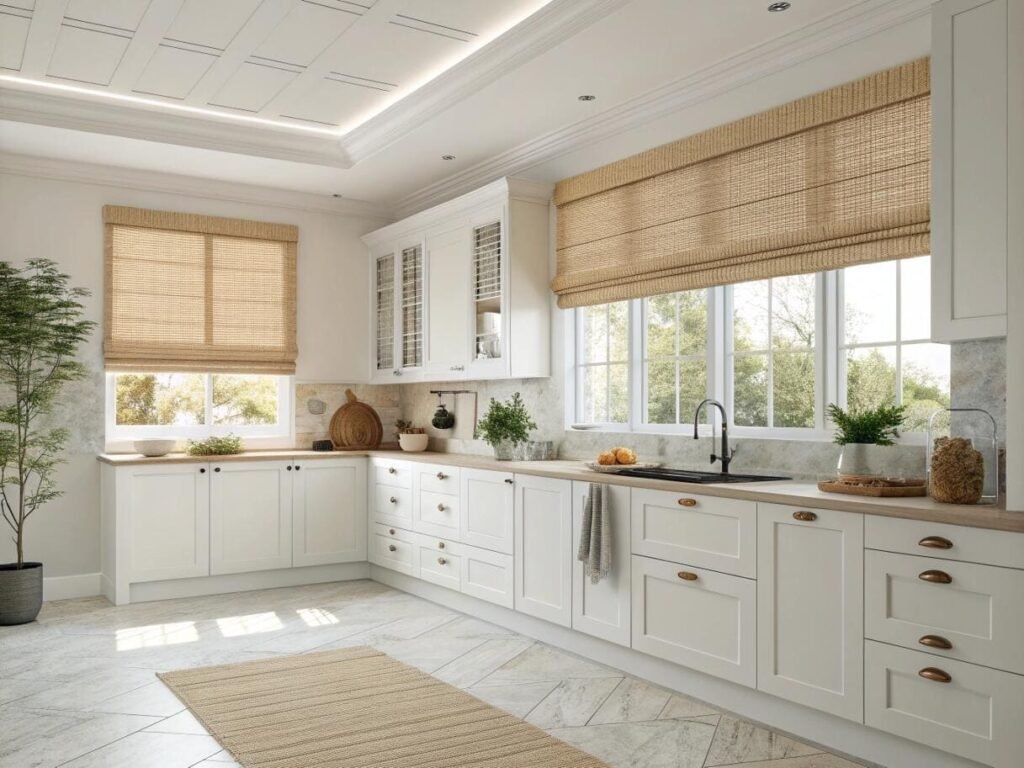Love the warm, natural look of bamboo Roman blinds[^1] but worry they won't last? You invest in style for your projects, only to see them fade, warp, and fail on privacy.
The biggest issue with bamboo Roman blinds isn't just one flaw; it's a "lifespan mismatch[^2]." They look great initially, but their short life (3-6 years) means higher long-term costs. The 2025 trend is shifting towards durable, smart, and multi-functional alternatives like high-performance synthetics or motorized cellular shades.
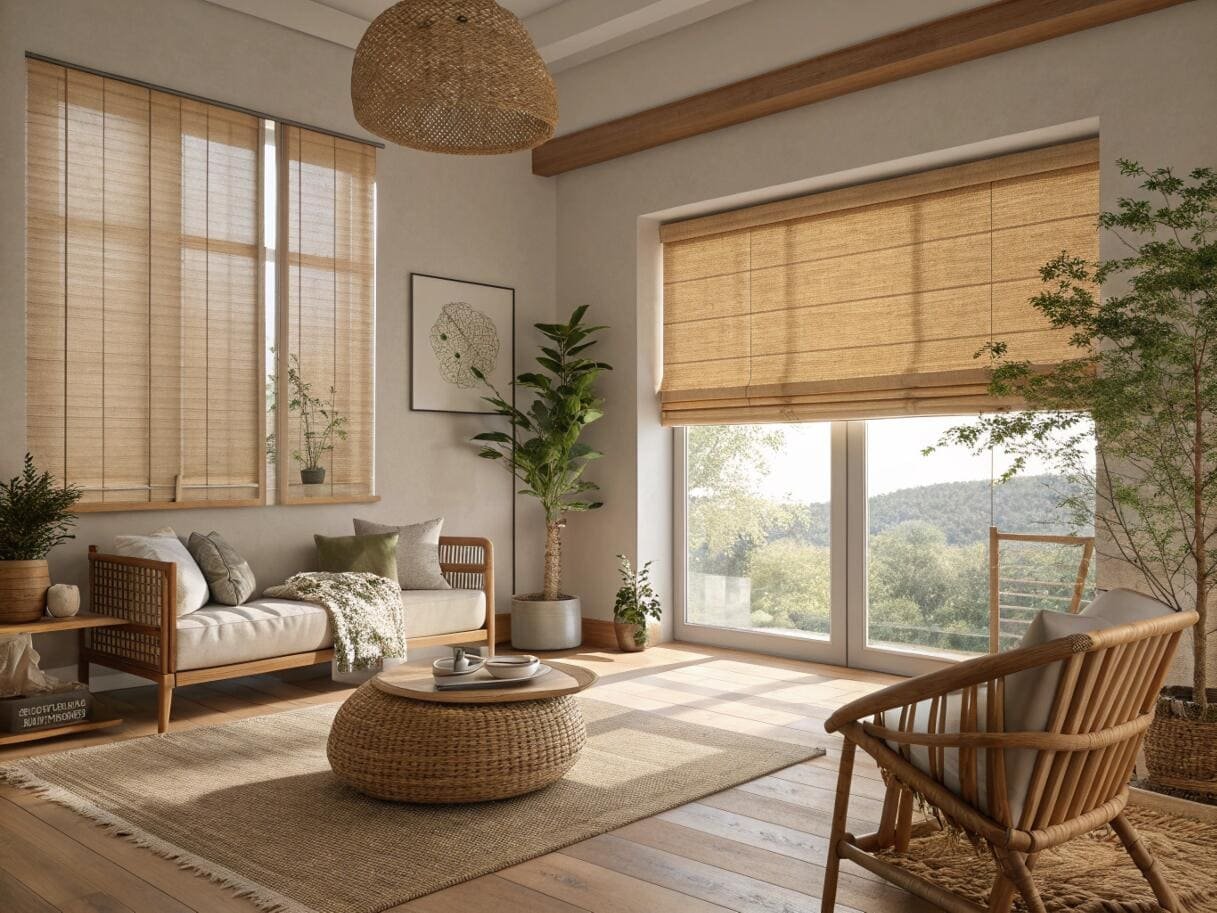
I've specified countless window treatments[^3] for projects, and bamboo Roman shades always spark a debate. Clients love the aesthetic, but the practical concerns are real. At first, I focused on the obvious issues like privacy and cleaning. But over time, a deeper problem became clear, one that changes how we should view these popular shades entirely. It’s not about avoiding them, but about understanding their true role and cost over time. Let's dive into the details that matter for your projects.
What are the real disadvantages of bamboo and Roman blinds?
Worried that bamboo blinds will fade, crack, or not provide enough privacy? These natural materials can look worn long before you expect, especially in busy or sunny rooms.
The main disadvantages of bamboo blinds are their limited durability and moisture sensitivity. They can warp, fade, and grow mold in damp conditions. Roman shades, being fabric-based, can also be prone to stains, sun fading, and mold if not cared for properly.
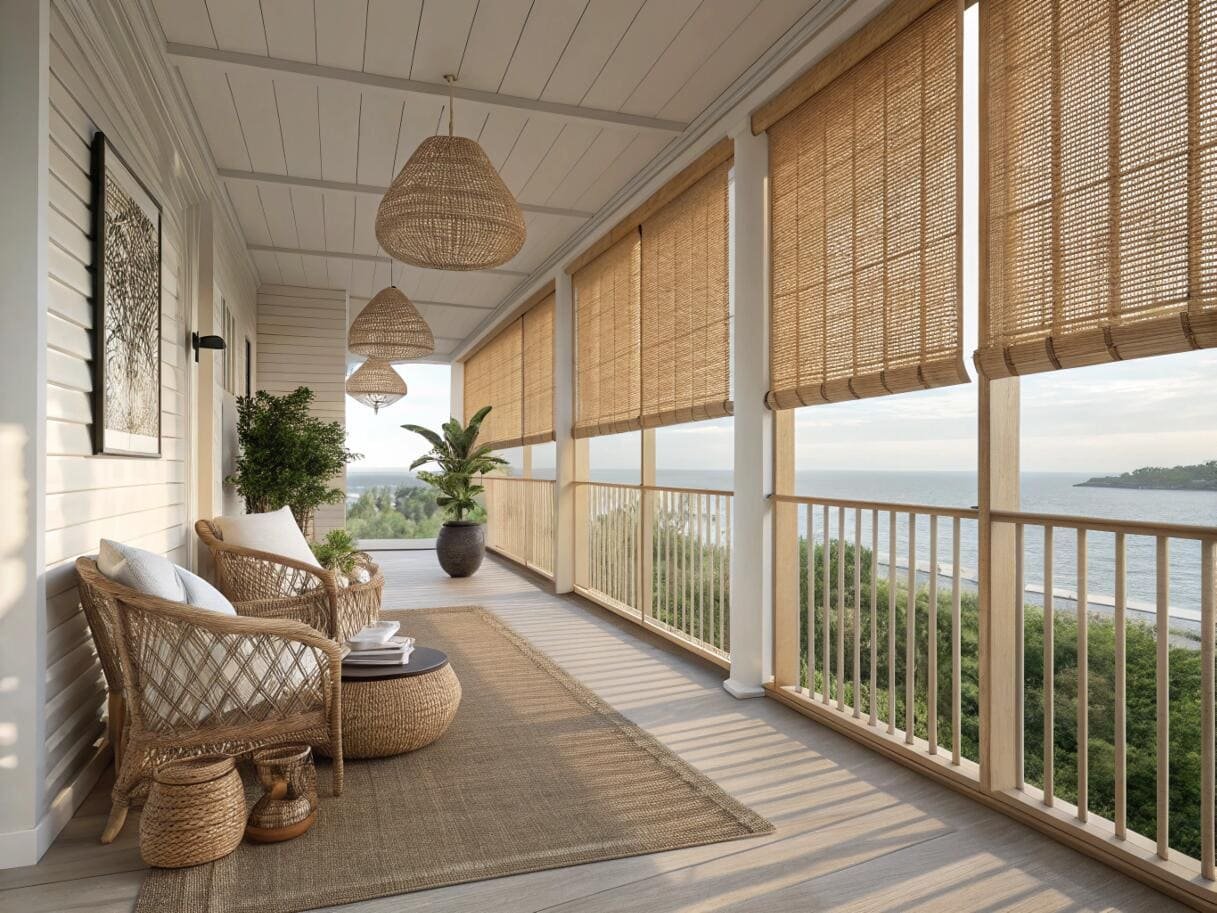
When my clients ask about bamboo blinds, I'm direct about the trade-offs. The natural aesthetic is fantastic, but the material comes with real limitations. Bamboo is a grass, which means it’s vulnerable to its environment.
Material Limitations
- Sun & Humidity: In a south-facing window, the sun's UV rays will cause the bamboo to fade and become brittle. I’ve seen shades become discolored and the strings holding them together deteriorate in just a few years. In high-humidity areas like bathrooms or kitchens, bamboo can absorb moisture, leading to warping or even mold growth, which is a major concern for any project.
- Privacy & Light Control: The woven nature of bamboo shades means there are always small gaps. During the day, they filter light beautifully. But at night with lights on inside, silhouettes are often visible from the outside, which compromises privacy. Adding a privacy liner helps, but it adds cost and bulk.
Roman shades have similar issues because they are fabric-based. They are susceptible to staining and are not ideal for kitchens where they can absorb smells and splashes. They can also develop mold in damp environments. The key takeaway for my pro clients is that these natural and fabric blinds are beautiful, but they aren't a fit-and-forget solution for every room.
Are bamboo and Roman shades still in style for 2025?
Afraid of choosing window treatments that will look dated in a year or two? It's a common concern when balancing current trends with long-term value for client projects.
Yes, both bamboo and Roman shades are definitely still in style for 2025. The trend towards natural, organic materials is strong. Roman shades are considered timeless and adapt well to modern designs with new fabrics and patterns. The key is choosing the right application.

The 2025 interior design landscape is embracing a beautiful contradiction: a love for natural, organic materials alongside a demand for high-tech smart features. This is where both bamboo and Roman shades find their place.
The Rise of Natural and Timeless Styles
- Natural & Sustainable Trend: Bamboo and woven wood shades are popular because they bring texture and warmth into a space, aligning with the biophilic design trend that connects interiors with nature. They work perfectly with the earthy, neutral color palettes that are popular right now. For projects aiming for a rustic, boho, or coastal vibe, they are a fantastic choice.
- Timeless Roman Shades: Roman shades have an enduring appeal that transcends fleeting trends. Their soft fabric folds add a layer of sophistication that hard blinds can't match. In 2025, they remain a top choice, but with modern updates. Bold patterns, rich textures, and smart motorization options are keeping them relevant and highly sought-after by designers.
So, neither style is going "out." Instead, the trend is about using them smarter. For a project focused on pure aesthetics and natural feel, bamboo is great. For timeless elegance and customization, Roman shades are perfect. But for durability and modern convenience, project buyers are increasingly looking towards smart synthetic alternatives.
What blinds guarantee privacy and are replacing traditional options?
Struggling to find window treatments that offer total privacy, especially at night? Standard blinds can leave you feeling exposed, with light leaks and visible silhouettes for outsiders to see.
For guaranteed privacy, blackout shades[^4], cellular shades, and Roman shades with a blackout liner are excellent choices. Layering drapes over blinds is also a popular solution. In 2025, people are using smart motorized shades and dual-function shades for ultimate privacy control.
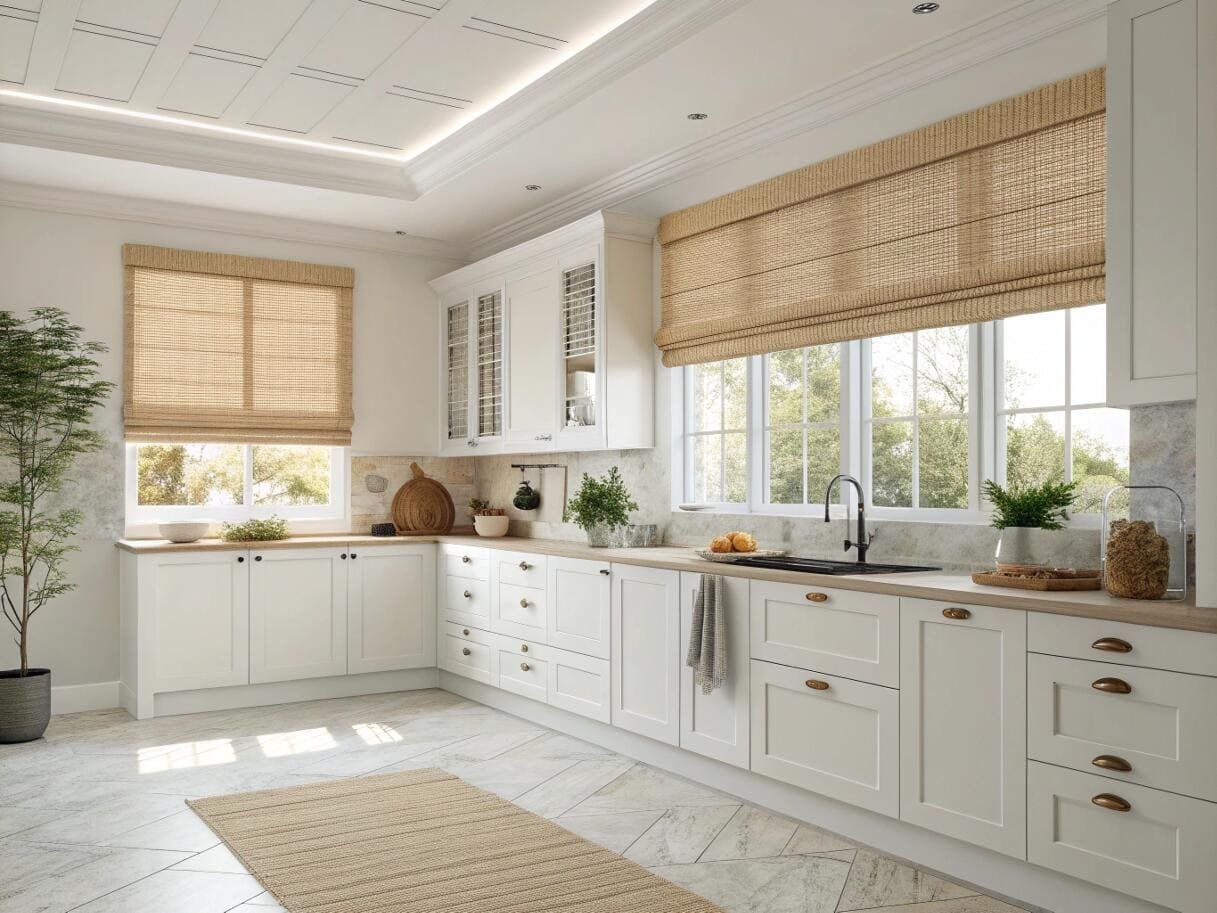
Privacy is a non-negotiable for many projects, especially in bedrooms and street-facing rooms. While I love the look of natural woven shades, they often aren't the best for privacy on their own. At night, when the lights are on inside, they can become semi-transparent. This is why we're seeing a shift toward more robust solutions.
Here are the top options I recommend:
- Layered Treatments: This is a huge trend for 2025. By layering a functional shade (like a roller or cellular shade) underneath decorative curtains, you get the best of both worlds. The shade provides privacy and light control, while the drapes add style, texture, and an extra barrier.
- Blackout Liners: For fabric-based options like Roman shades, adding a blackout liner is essential for bedrooms or media rooms. This transforms them from light-filtering to room-darkening, providing total privacy.
- Dual Shades: Also known as zebra shades or day-and-night shades, these are becoming very popular. They combine a sheer fabric with an opaque one in a single unit. This gives clients the flexibility to switch between filtered light and complete privacy. It’s a modern, sleek alternative to layering two separate treatments.
Many traditional corded blinds are also being phased out due to new safety regulations, making cordless and motorized options the new standard. These alternatives not only enhance safety but also provide a cleaner look and easier operation.
What is the life expectancy and real cost of different blinds?
Thinking about the upfront cost of blinds is smart, but it's only half the story. The real cost emerges over years of use, repairs, and eventual replacement.
The life expectancy of blinds varies greatly by material. High-quality faux wood can last 10-15+ years, while bamboo shades often need replacing in 3-6 years due to fading and wear. This shorter lifespan makes bamboo a more expensive option long-term.
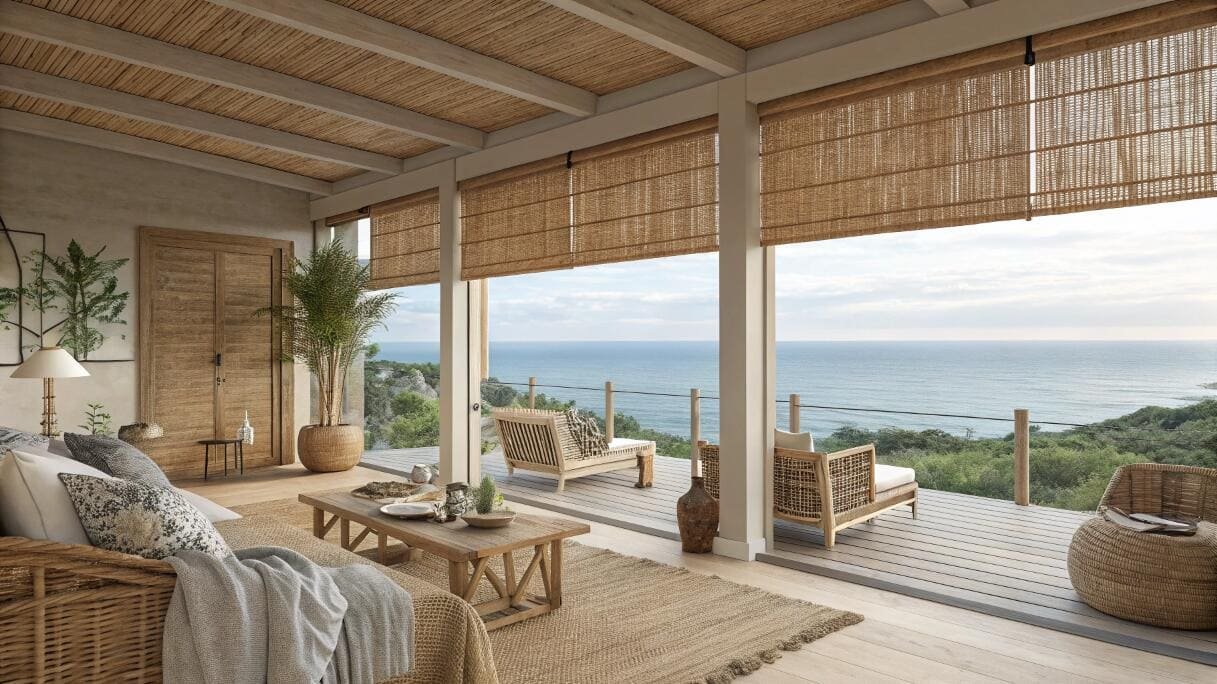
This is where my core insight comes in. I tell my project partners that the biggest issue with bamboo is the "lifespan mismatch." A client invests with a 10-15 year expectation, but a bamboo shade in a sunny window might only last 3-6 years before it starts looking tired. Strings deteriorate, the material becomes brittle, and colors fade.
Let's break down the total cost of ownership over 15 years for a standard window.
| Blind Type | Initial Cost (Est.) | Lifespan (Years) | Replacements (in 15 yrs) | Total Cost (15 yrs) | Annualized Cost |
|---|---|---|---|---|---|
| Bamboo Roman Shades | $150 | 5 | 2 | $450 | $30 |
| Faux Wood Blinds | $100 | 12-16 | 0 | $100 | ~$7 |
| Motorized Cellular Shades | $300 | 12-18 | 0 | $300 | ~$20 |
| Real Wood Blinds | $200 | 10-15 | 0 | $200 | ~$15 |
As you can see, the "affordable" bamboo shade becomes one of the most expensive choices over time. High-quality synthetic alternatives like faux wood, or even motorized cellular shades, provide better long-term value. They resist moisture, don't fade as quickly, and their mechanisms are built for durability. This is why for most projects, I now frame bamboo as a "short-term decorative solution," and our high-performance synthetics[^5] as the "smart, long-term investment."
Do quality blinds actually increase home value?
Wondering if upgrading window treatments pays off when it's time to sell? It's a common question, and the answer is more than just aesthetics; it's about perceived value.
Yes, high-quality window treatments like plantation shutters, wood blinds, and smart motorized shades can increase home value. They enhance curb appeal, improve energy efficiency, and signal that a home is well-maintained, making it more attractive to buyers.

In my experience working with contractors and designers on build-to-sell projects, window treatments are a finishing touch that can make a surprisingly big impact on buyers. Cheap, flimsy, or dated blinds can make an entire home feel neglected. In contrast, quality window treatments suggest attention to detail.
Here’s how they add value:
- Enhanced Aesthetics & Staging: Stylish blinds like real wood or custom-fit Roman shades create a polished, move-in-ready feel that photographs well and appeals to buyers. Neutral colors are usually a safe bet.
- Energy Efficiency: This is a huge selling point. Cellular shades and wood blinds offer excellent insulation, which can reduce energy bills. Buyers are increasingly savvy about this and see it as a long-term saving.
- Smart Home Integration: Motorized shades are no longer just a luxury feature; they're becoming an expected part of a modern, high-end home. Smart blinds that integrate with systems like Alexa or Google Home are a powerful value-add, communicating convenience and sophistication .
While you might not recoup 100% of the cost, the upgrade can make your property sell faster and for a higher price, especially when you choose durable, timeless, and functional options over cheap, temporary fixes.
Conclusion
Choosing the right blinds involves balancing style, durability, and cost. While bamboo offers charm, modern synthetic and smart options often provide better long-term value and functionality for today's projects.
---
[^1]: Explore the benefits and drawbacks of bamboo Roman blinds to make an informed decision for your home.
[^2]: Understanding lifespan mismatch can help you choose the right window treatments for long-term value.
[^3]: Understand the impact of quality window treatments on your home's resale value.
[^4]: Learn about blackout shades and how they can enhance privacy and light control in your home.
[^5]: Discover the advantages of high-performance synthetics for durability and style in your home.Partner with VelaBlinds for Your Next Project
Smart window treatments shouldn't be complicated. After working with 500+ distributors and contractors worldwide, I've streamlined the process to get you quality products, competitive pricing, and reliable support - every time.
Why project professionals choose VelaBlinds:
- ✅ Fast, Accurate Quotes - Detailed specs and pricing within 24 hours
- ✅ Transparent Pricing - No hidden fees, volume discounts clearly outlined
- ✅ Quality Assurance - Direct partnerships with certified OEM manufacturers
- ✅ Project Support - Dedicated account manager from quote to delivery
Start your next project:
📧 Quick Quote: Send your requirements to info@velablinds.com
📱 Direct Contact: WhatsApp +86 137 2012 8317
🌐 Browse Solutions: https://velablinds.com/
📁 Product Resources: Access spec sheets, catalogs & project files
Paul Chen, Founder
"I built VelaBlinds to solve the real challenges I faced as a project buyer - long lead times, unclear specs, and unreliable suppliers. Let's discuss how we can power your projects with smarter blinds."
Serving distributors and contractors across North America, Europe, and Australia since 2018.

